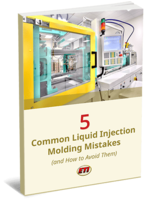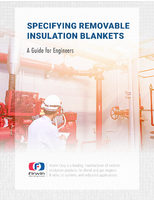Manufacturing Cycles Shortened by 5-Axis Machining and Automation

Since 2006, under the new ownership of ex-Wall Street investment banker, Allan Edwards, Weymouth manufacturing company FGP Precision Engineering has evolved into one of the UK's leading machined parts subcontractors serving primes and first-tier suppliers in the aerospace industry.
Before Mr Edwards bought the company, FGP shareholder and director, Nigel Pitman, and senior chargehand, Simon Griffiths-Hughes, had already come to the conclusion that the firm's 3-axis machining centres should be replaced with 5-axis equipment. The rationale was twofold.
First, it was to expand production into components requiring fully interpolative metalcutting in five axes, as such parts are normally of high added value. The second reason was to cut the number of separate operations required for less complex work by positioning and clamping one or two CNC axes to present components more efficiently to the spindle, thereby minimising set-up costs and reducing lead-times.
Considerable effort was spent investigating various 5-axis machining centre options and eventually machines from DMG / MORI SEIKI were selected. First to arrive was a 500 x 450 x 400 mm capacity DMU 50 eVo linear. There are now three of these models on the shop floor, plus a larger (750 x 600 x 520 mm) DMU 70 eVo linear.
All are fitted with an 18,000 rpm SK40 spindle for high productivity when machining aluminium, which is the norm at the Weymouth factory. However, steels and titanium are also regularly processed, for which the rigidity of the DMG / MORI SEIKI machines is invaluable.
The pace of investment accelerated after Mr Edwards arrived. For example, a Wenzel coordinate measuring machine with Renishaw PH20 touch trigger head, a Hommel laser scanner and a Faro arm are among items recently added to strengthen the metrology department, which customers say is among the best facilities operated by any subcontractor in the UK.
In July 2012, an 8,000 sq ft extension on the Weymouth site was completed, forming part of an on-going, comprehensive reorganisation of FGP's factory and offices.
Shortly afterwards, following cutting trials at DMG / MORI SEIKI in Germany, an automated HSC 55 linear 5-axis production cell was installed, having a nominal half-metre-cube capacity, 28,000 rpm HSK-A63 spindle and feed rates up to 80 m/min. It is additionally fitted with a PH130 70-position automated storage and retrieval system for pallets, configured as a stack of rotary magazines on five levels holding Erowa pallets and fixtures.
Mr Edwards commented, "As a rule of thumb, every time we install a new, stand-alone DMG / MORI SEIKI 5-axis machine, we are getting parts off in one or two hits, compared with five to 10 operations when we use 3-axis CNC mills. Set-ups are faster, there is less risk of introducing inaccuracies and lead-times are reduced.
"We were expecting a further increase in output with our latest high speed cutting machine compared with a 5-axis machining centre loaded by hand and are pleased at just how much more productive the automated cell is.
"Using the HSC machining centre with its faster spindle speed, higher feed rates and automated pallet handling, we have been able to cut lead-times by a further 50 per cent, resulting in startling increases in productivity."
The compact pallet magazine sits to the rear of the machine, leaving the front clear for unrestricted operator access. A robotic arm transfers workpieces quickly into and out of the machining area through the back of the HSC 55 linear. The +10 / -110 degree trunnion that provides one of the rotary axes is held horizontal and the 360 degree rotary table is orientated during pallet exchange, which employs the Erowa universal power chuck system, UPC-P.
Apart from speed of production, there are other benefits of using high speed, automated metalcutting, according to Mr Edwards. A mixed schedule of components can be produced lights-out overnight during the week and at weekends without operator intervention, increasing efficiency. Batch size can be from one-off to high volume. Frequent repeat work allows maximum advantage to be taken of the advanced production planning available with the automated cell.
Further advantages to FGP of high speed cutting are increased tool life, as optimal speeds and feeds can be selected for any given cutter and workpiece material; and excellent component finish, without surface marks, essential for safety-critical aerospace parts to prevent the risk of microcracking.
Mr Edwards continued, "When the HSC 55 linear was installed, it hit the ground running due to the support of DMG / MORI SEIKI. Two of their engineers were here for four weeks, commissioning the machine and working with FGP staff to write new programs using our MasterCAM software.
"I would fill our machine shop with similar production cells right now if I had the funds. High metalcutting speeds, top accuracy, good surface finish, reduced set-up times and less labour is a powerful combination and it is definitely the way we will be focusing over the coming years.
"Our customers like this approach too and are keen to see modern plant on the shop floor - it gives them confidence. I believe it is the main reason that our order book is increasing."
On behalf of: DMG / MORI SEIKI (UK) Ltd, 4030 Siskin Parkway East, Coventry, CV3 4PE.
Tel: 0247 651 6120.
Fax: 0247 651 6136.
E-mail: kirsty.wilkins@dmgmoriseiki.com
Web site: www.dmgmoriseiki.com
Contact: Richard Watkins, Sales Director.
Release no: DMG-MS 1045(CS)




